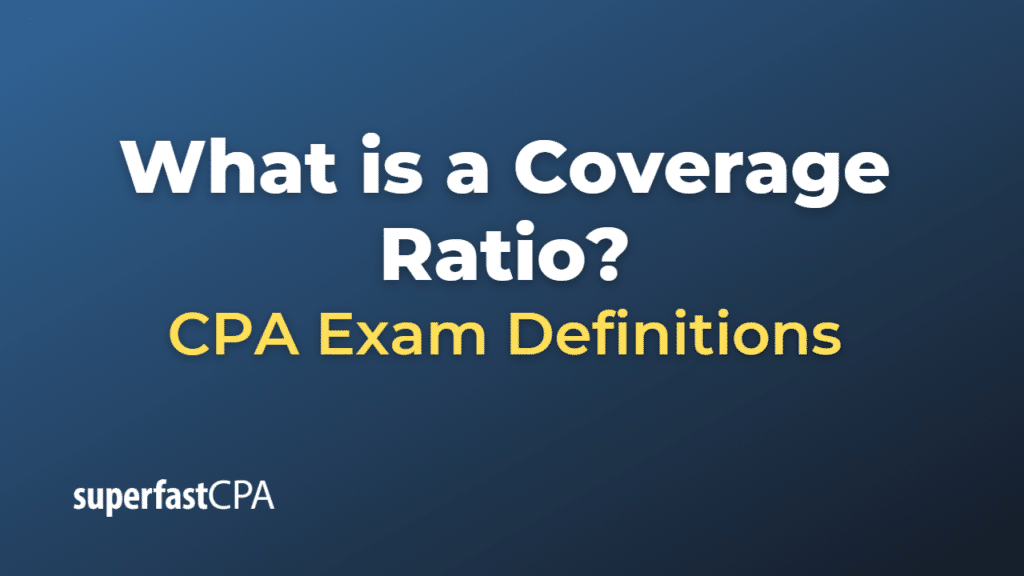Coverage Ratio
A coverage ratio is a measure of a company’s ability to service its debt and meet its financial obligations. The ratio is calculated by taking the company’s income or cash flow and dividing it by the amount it must pay out for debt servicing, interest, and leases.
There are several types of coverage ratios:
- Interest Coverage Ratio: This measures a company’s ability to pay the interest on its debt. It’s calculated as earnings before interest and taxes (EBIT) divided by interest expenses. A higher ratio indicates better financial health.
- Debt Service Coverage Ratio (DSCR): This is often used by lenders to assess a company’s ability to cover all of its debt service obligations, including repayment of principal and interest on its debt. It’s calculated as net operating income divided by total debt service (principal and interest payments).
- Asset Coverage Ratio: This evaluates a company’s ability to repay its debt obligations after selling its assets. It’s calculated as the company’s total assets minus short-term liabilities, divided by total debt. A higher ratio means the company has more than enough assets to cover its debts.
- Times Interest Earned Ratio (TIE): This is similar to the interest coverage ratio and is calculated as EBIT divided by interest expense. It indicates how many times a company can cover its interest charges on a pretax basis.
These ratios are important indicators of a company’s financial health and are often used by lenders, investors, and analysts when evaluating a company’s financial stability or creditworthiness. A higher coverage ratio generally indicates a lower risk, as it means the company is more easily able to meet its financial obligations.
Example of a Coverage Ratio
Let’s consider an example of an Interest Coverage Ratio, which is one of the common types of coverage ratios.
Suppose a company has an Earnings Before Interest and Taxes (EBIT) of $500,000 for a given year. During the same year, the company has interest expenses of $100,000.
The Interest Coverage Ratio would be calculated as follows:
\(\text{Current Ratio} = \frac{\text{EBIT}}{\text{Interest Expenses}} \)
\(\text{Current Ratio} = \frac{\$500,000}{\$100,000} \)
\(\text{Current Ratio} = 5 \)
An Interest Coverage Ratio of 5 means that the company’s earnings (before interest and taxes) are 5 times greater than its interest expenses. This implies that the company is in a good position to cover its interest expenses, which would generally be seen as a positive indicator by lenders and investors.
However, it’s important to note that what is considered a “good” coverage ratio can vary depending on the industry and other factors. Also, a single ratio should not be used in isolation to assess a company’s financial health. It’s usually best to look at multiple financial ratios and other aspects of a company’s financial statements to get a complete picture of its financial condition.













